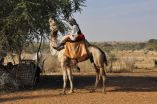(Press-News.org) (Vienna, October 17, 2014) Two new pill-only regimens that rapidly cure most patients with genotype 1 hepatitis C (HCV) infection could soon be widely prescribed across Europe. Two recently-published studies1,2 confirmed the efficacy and safety of combination therapy with two oral direct-acting antiviral agents (DAAs), with around 90% of patients cured after just 12-weeks of treatment.
At the 22nd United European Gastroenterology Week (UEG Week 2014) in Vienna, Austria, Professor Michael P. Manns from Hannover Medical School in Germany will be presenting this data and says this represents a massive step forward in the treatment of this life-threatening infection. "These new pill-only regimens have the potential to offer more effective, safer and faster virus eradication than current therapies, even in traditionally hard-to-cure patients," he says. "We hope that a pill-only regimen will encourage more people to come forward and accept treatment so we can one day eradicate this deadly virus."
Burden of hepatitis C infection
Hepatitis C virus (HCV) infection is a global epidemic, with more than 180 million people thought to have chronic HCV infection worldwide. HCV genotype 1 represents the majority of infections in Europe and is considered the most difficult to cure. Until recently, the standard of care for chronic HCV genotype 1 infection involved a combination of drugs, was associated with severe side-effects and involved complicated injection and tablet regimens lasting up to 1 year.
"These treatment regimens, although effective, are difficult to manage and poorly tolerated by many patients, and some clinicians won't even use them," says Prof. Manns. "We desperately need simpler treatment regimens that are highly effective, that can be used in more patients, and that do not cause such severe toxicity."
New pill-only regimens
Two recently-published studies used different combinations of oral antivirals to treat patients with chronic HCV genotype 1 infection. In the first study – called the HALLMARK-DUAL study1 – 645 patients with HCV genotype 1b infection received an NS3 protease inhibitor twice-daily plus once-daily NS5A replication complex inhibitor or placebo. Twelve weeks after the end of a 24 week treatment period (the primary endpoint), the combination regimen had provided a sustained virological response (SVR) – which is considered a cure – in 90% of previously untreated patients and 82% of patients who had failed to respond to, or could not tolerate, their previous treatment.
"This is a vast improvement over standard triple therapy, with efficacy observed across the board – even in patients with liver cirrhosis and those who have failed other treatments," says Prof. Manns. "The combination treatment was also well tolerated by most patients."
In a second study – called the COSMOS study2 – 167 patients with HCV genotype 1a and 1b infection were randomized and treated with a second generation NS3/4A protease inhibitor once-daily plus a NS5B polymerase inhibitor once-daily with or without ribavirin. After 12 weeks of treatment, 93% of patients (including those with cirrhosis and interferon non-responders) had achieved an SVR. Again, the combination regimen was well tolerated, with less than 2% of patients reporting serious adverse events or withdrawing from treatment because of adverse events.
"The results from these two studies suggest that interferon- and ribavirin- based treatment for chronic HCV infection may soon become a thing of the past," says Prof. Manns. "With several more pill only regimens having also been reported this year, this is a key moment in the history of HCV treatment and represents an important step towards universally effective, needle-free treatments for HCV."3,4,5.
INFORMATION:
References
1. Manns M, et al. Lancet. E-Pub:Jul 26 2014 http://dx.doi.org/10.1016/S0140-6736(14)61059-X
2. Lawitz E, et al. The Lancet 2014: 383: 9916:515-523
3. Afdhal N, et al, NEJM 2014: 370:1483-149
4. Feld J, et al, NEJM 2014: 370:1594-603
5. Sulkowski M, , NEJM 2014: 370:222-232
Notes to Editors
About UEG Week
UEG Week is the largest and most prestigious gastroenterology meeting in Europe and has developed into a global congress. It attracts over 14,000 participants each year, from more than 120 countries, and numbers are steadily rising. UEG Week provides a forum for basic and clinical scientists from across the globe to present their latest research in digestive and liver diseases, and also features a two-day postgraduate course that brings together top lecturers in their fields for a weekend of interactive learning.
From October 18-22, 2014, UEG will connect everyone to its annual meeting via livestream on http://www.ueg.eu. State-of-the-art lectures of Europe's largest GI meeting may be followed online from around the world. Include #UEGWeek in your tweets. UEG Week 24/7 features all recorded sessions from UEG Week and provides convenient and direct access to the complete congress material, including E-posters and abstracts.
About UEG
UEG, or United European Gastroenterology, is a professional non-profit organisation combining all the leading European societies concerned with digestive diseases. Together, its member societies represent over 22,000 specialists, working across medicine, surgery, paediatrics, gastrointestinal oncology and endoscopy. This makes UEG the most comprehensive organisation of its kind in the world, and a unique platform for collaboration and the exchange of knowledge.
To advance standards of gastroenterological care and knowledge across Europe and the world, UEG offers numerous activities and initiatives besides UEG Week, including:
UEG Education, the universal source of knowledge in gastroenterology, providing online and classroom courses, a huge online library and delivering the latest GI news, fostering debate and discussion
Training Support, funding for innovative training and educational programmes, as well as international scientific and professional co-operations
UEG Journal, published bi-monthly, covering translational and clinical studies from all areas of gastroenterology
EU Affairs, promoting research, prevention, early diagnosis and treatment of digestive diseases, and helping develop an effective health policy for Europe
Find out more about UEG's work. Visit http://www.ueg.eu
Follow UEG on Twitter @my_ueg and @UEGMedia
New pill-only regimens cure patients with hardest-to-treat hepatitis C infection
2014-10-17
ELSE PRESS RELEASES FROM THIS DATE:
Explosion first evidence of a hydrogen-deficient supernova progenitor
2014-10-17
A group of researchers led by Melina Bersten of the Kavli Institute for the Physics and Mathematics of the Universe recently presented a model that provides the first characterization of the progenitor for a hydrogen-deficient supernova. Their model predicts that a bright hot star, which is the binary companion to an exploding object, remains after the explosion. To verify their theory, the group secured observation time with the Hubble Space Telescope (HST) to search for such a remaining star. Their findings, which are reported in the October 2014 issue of The Astronomical ...
NASA's Hubble finds extremely distant galaxy through cosmic magnifying glass
2014-10-16
Peering through a giant cosmic magnifying glass, NASA's Hubble Space Telescope has spotted a tiny, faint galaxy -- one of the farthest galaxies ever seen. The diminutive object is estimated to be more than 13 billion light-years away.
This galaxy offers a peek back to the very early formative years of the universe and may just be the tip of the iceberg.
"This galaxy is an example of what is suspected to be an abundant, underlying population of extremely small, faint objects that existed about 500 million years after the big bang, the beginning of the universe," explained ...
NASA begins sixth year of airborne Antarctic ice change study
2014-10-16
NASA is carrying out its sixth consecutive year of Operation IceBridge research flights over Antarctica to study changes in the continent's ice sheet, glaciers and sea ice. This year's airborne campaign, which began its first flight Thursday morning, will revisit a section of the Antarctic ice sheet that recently was found to be in irreversible decline.
For the next several weeks, researchers will fly aboard NASA's DC-8 research aircraft out of Punta Arenas, Chile. This year also marks the return to western Antarctica following 2013's campaign based at the National Science ...
NASA spacecraft provides new information about sun's atmosphere
2014-10-16
NASA's Interface Region Imaging Spectrograph (IRIS) has provided scientists with five new findings into how the sun's atmosphere, or corona, is heated far hotter than its surface, what causes the sun's constant outflow of particles called the solar wind, and what mechanisms accelerate particles that power solar flares.
The new information will help researchers better understand how our nearest star transfers energy through its atmosphere and track the dynamic solar activity that can impact technological infrastructure in space and on Earth. Details of the findings appear ...
New Univeristy of Virginia study upends current theories of how mitochondria began
2014-10-16
Parasitic bacteria were the first cousins of the mitochondria that power cells in animals and plants – and first acted as energy parasites in those cells before becoming beneficial, according to a new University of Virginia study that used next-generation DNA sequencing technologies to decode the genomes of 18 bacteria that are close relatives of mitochondria.
The study appears this week in the online journal PLOS One, published by the Public Library of Science. It provides an alternative theory to two current theories of how simple bacterial cells were swallowed ...
Shrinking resource margins in Sahel region of Africa
2014-10-16
The need for food, animal feed and fuel in the Sahel belt is growing year on year, but supply is not increasing at the same rate. New figures from 22 countries indicate falling availability of resources per capita and a continued risk of famine in areas with low 'primary production' from plants. Rising temperatures present an alarming prospect, according to a study from Lund University in Sweden.
The research has investigated developments between the years 2000 and 2010 in the Sahel belt, south of the Sahara Desert. Over this ten-year period, the population of the region ...
How a molecular Superman protects the genome from damage
2014-10-16
Cold Spring Harbor, NY – How many times have we seen Superman swoop down from the heavens and rescue a would-be victim from a rapidly oncoming train?
It's a familiar scenario, played out hundreds of times in the movies. But the dramatic scene is reenacted in real life every time a cell divides. In order for division to occur, our genetic material must be faithfully replicated by a highly complicated machine, whose parts are tiny enough to navigate among the strands of the double helix.
The problem is that our DNA is constantly in use, with other molecular machines ...
First detailed map of aboveground forest carbon stocks in Mexico unveiled
2014-10-16
Available for download today, the Woods Hole Research Center (WHRC) and Allianza MREDD+ released the first detailed map of aboveground forest carbon stocks of Mexico. This carbon stock inventory is very valuable for Mexico, as one of the first tropical nations to voluntarily pledge to mitigation actions within the context of the United Nation's Reducing Emissions from Deforestation and forest Degradation (REDD+) program.
The hectare-scale map is the result of a collaboration led by WHRC scientists Josef Kellndorfer and Oliver Cartus with Mexico's National Forestry Commission ...
News from Annals of Internal Medicine: Conventional medical centers may be unable to prevent spread of Ebola
2014-10-16
1. Conventional medical centers may be unable to prevent spread of Ebola
A group of infectious disease experts suggests that conventional U.S. medical centers are unprepared and ill equipped to manage Ebola and a national network of specialized containment and treatment facilities may be needed to reduce the virus' spread, according to an article being published in Annals of Internal Medicine. Despite efforts from the Centers for Disease Control and Prevention (CDC) to prepare hospitals for Ebola, enormous challenges remain. The authors express doubt that conventional ...
Journey to the center of the earth
2014-10-16
A UC Santa Barbara geochemist studying Samoan volcanoes has found evidence of the planet's early formation still trapped inside the Earth. Known as hotspots, volcanic island chains such as Samoa can ancient primordial signatures from the early solar system that have somehow survived billions of years.
Matthew Jackson, an associate professor in UCSB's Department of Earth Science, and colleagues utilized high-precision lead and helium isotope measurements to unravel the chemical composition and geometry of the deep mantle plume feeding Samoa's volcanoes. Their findings ...







